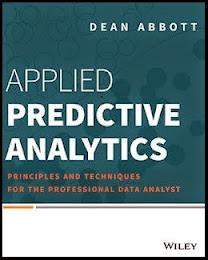First, I'd like to applaud the author, Vladimir Stojanovski, for concluding there are differences, and for trying to get at what those differences are.
The article states that this:
To tie this all back to the question of BI vs. Predictive Analytics (PA), a metaphor I've heard used to describe the difference goes something like this: if BI is a look in the rearview mirror, predictive analytics is the view out the windshield.
In my experience, this is a common definition. Predictive Analytics and Data Mining are seen as predicting future events, whereas OLAP looks at past data.
While I'd love to jump on this bandwagon because it makes for a simple and compelling story, I cannot ride this one. And that's because both BI and PA look at historic data. PA isn't magic in coming up with predictions of the future. In fact, both BI and PA ultimately look at and use the same data (or variations of the same historic data). Both can predict the future, so long as the future is consistent with past, either in a static sense, or in a dynamic sense (by extrapolating past data into the future).
I think it is better to describe the difference in this way: BI reports on historical data based upon an analyst's perspective on which fields and statistics are interesting, whereas PA induces which fields, statistics and relationships are interesting from the data itself. I think it is the combinatorics, sifting, iterative nature of PA that gives it better predictive accuracy of the future (coupled with using business metrics to assess if the fields found truly are predictive or not).
So let's not oversell--what PA does is reason enough for it to be an integral part of any analytics or BI group.













